
Understanding Gearing
Gearing is how your engine connects to the road, making you move. Without some kind of gear reduction, the rear wheel would spin at the same speed as the engine, way too fast to be useable by any measure. By offering a selection of reductions in the gearbox, the operator can fine tune the engine speed with the desired road speed to cruise comfortably, or accelerate quickly. The proper setup of the gearing of your motorcycle is crucial to getting everything out of the engine and to the road, when you need it.
When choosing a final drive or gearbox gearing, several factors must be considered. Will the change in gears result in too much shifting or improved shifting during turns, especially with respect to RPM's on turn exit? Is peak performance desired where the terrain is very fast and level or much slower with very steep climbs and decent's? Are drag type starts more important than maximum MPH, or vis-a-vis? If the rider understands clearly where the focus of performance is, the selection of gears becomes very well directed.
Let's get into the theory.
Rocket scientists talk about pounds of thrust, so do I. Thrust is what power tuning is all about. What is your maximum thrust at a given speed and what gear do you need to be in to use it.
Remember, horsepower and torque are not what we care about at all. We do not get horsepowerd down the road, we do not get torqued down the road, but we do get THRUST down the road. We only care about DRIVING FORCE or THRUST. Thrust at the tire contact patch is what gets you down the road. The more trust you have at the rear wheel will accelerate you faster and gets you down the road quicker.
Horsesepower and torque are just tools that we use to understand how our engine is going to interact with the gearbox to make that all important thrust. Horsepower and torque are two different things, but they are very closely related.
Interestingly, peak engine horsepower (not the curve) turns out to be the defining characteristic that gear boxes are built around. Horsepower is the measure of energy or ability to do work coming from the engine. A better unit to use would be Watts, but convention holds, and horsepower is easily calculated. The thing is that horsepower is a just a way of combining of torque and rpm. We are not concerned at all by the horsepower curve or it's shape, only where it is maximized. (FYI: 1 Horsepower is also equal to 745.7 Watts, 550 Ft*Lb/Sec., 33,000 Ft*Lb/Min.) To better understand Horsepower Click Here.

Torque is defined as being force times displacement. As Archimedes said so long ago, "Give me a lever long enough and I can move the world", implying limitless torque amplification. The limit we have on energy output, on the other hand, would require that it would take a very, very, very long time to move the world. Torque is converted to a force at the rear wheel, moving the bike. More torque is always better than less, a nice smooth curve is easier to use, and the greater the torque at higher rpm's the faster the bike will accelerate at higher speeds.

By using a dynamometer, we can measure the torque that the engine is making at the crankshaft. Charts like this are generated by graphing the torque numbers and using those to multiply and graph the horsepower numbers. This is a dyno chart from my bike (2005 CBR600RR). Note that peak horsepower is 101.33 or 38 ft-lb * 14006 rpm / 5252. That is the only important detail from the horsepower curve. Otherwise, the torque curve supplies the rest of the info that we need.
This data may be correct when a bike is on the dyno, on that day, in that dyno room. In the real world weather and altitude conditions may be better or worse for making power. Also, the increasing effect of ram air systems and radiational cooling at higher speeds may add as much as 10% power gains at top speeds, but that is very hard to measure. Just keep in mind that a lot more variables exist than the ones we are looking at now. This does not discount what we are doing here, it is still very close to what is happening, but we have to take it all with a grain of salt.
Using the Peak Horsepower number, we graph the function: Driving Force = bHP * 375 / mph. This has been called the ULTIMATE POWER CURVE. (Since 1 bHP = 550 ft*lb/sec, and we are dividing by mph, we can reduce to pounds of force by multiplying by 550(ft*lb/sec)*3600(sec/hr)/5280 (ft/mile) or 375(lb*hr/mile)
A very close approximation of wind resistance is supplied for reference. Assuming that this curve is a true representation of the aerodynamic drag of the bike, and that our peak horsepower number is accurate, we know that we will not go any faster than 160mph unless we are going down a very steep hill. Cd = 0.55, A = 6, p=0.0801, g=32.1.
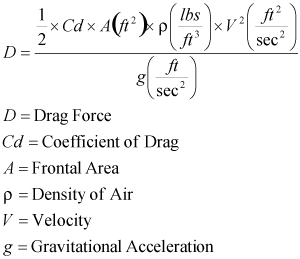
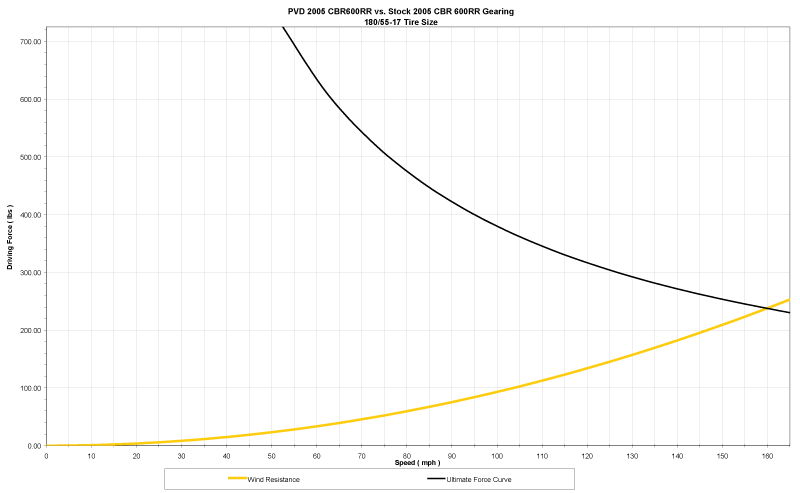
This ultimate force curve shows us the maximum amount of force or thrust that is available at the rear wheel contact patch at any given land speed. This is what we would have if we had an infinite transmission, but we do not. Usually we are only able to have 5 or 6 speeds at best. This is where our problems really start. We are going to have some gaps. Those gaps slow us down.
This is where we use the torque information from the dyno. We multiply the torque from the engine through to the rear wheel where it finally becomes a driving force.

![]()
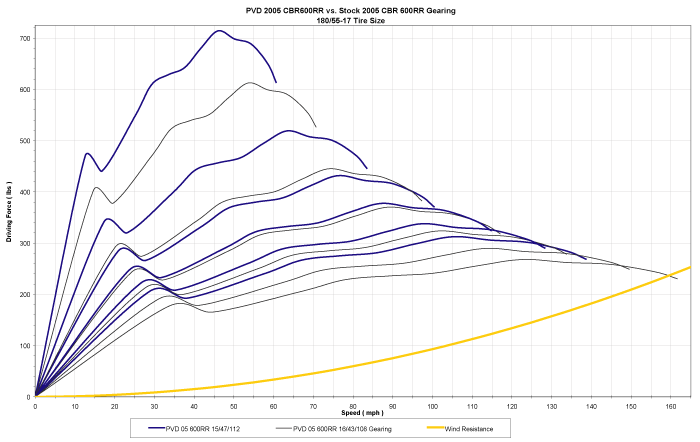
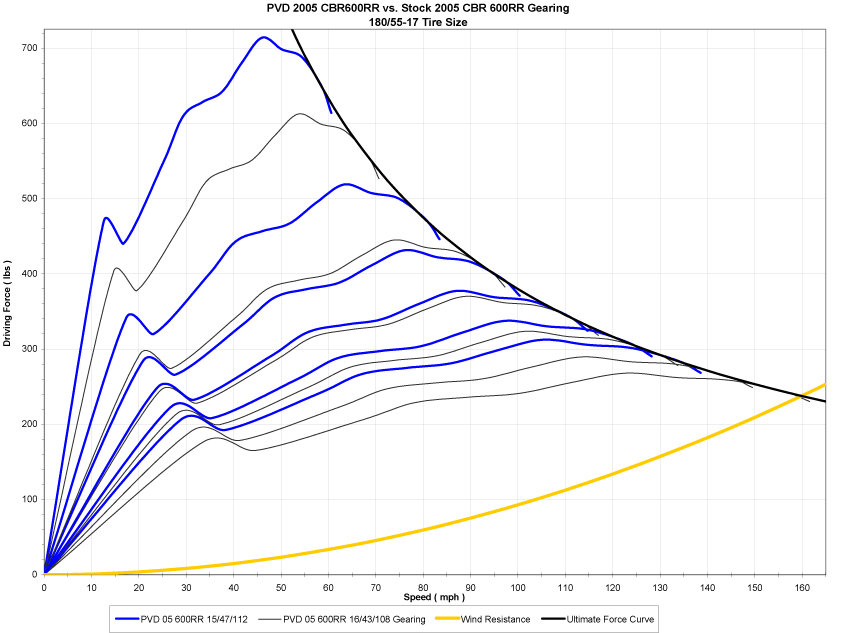
Note how the driving forces change at different land speeds between stock and modified gearing. Also notice that the correct up shift point is always at redline in the first three gears (for 600RR), but downshift point is somewhat lower than that. The stock gearing is set up for 162mph top speed, but my re gearing will max out at 138mph. I've never had the need to go any faster than 130mph, so the final drive modification makes a lot of sense from this first measure. Important to see, though, is that until I max out at 138mph, I am only really throwing out first gear. With stock gearing, I would be throwing out first, fifth, and sixth gear. Gears are precious. They should never be wasted.
The second measure of weather our gearing is correct, is whether or not we are entering and exiting corners in a gear that exploits as much exit acceleration as possible. This is when it is nice to have a bike like the CBR1000RR. It has a GP style cassette gearbox that allows gearbox changes without removing the engine from the bike or splitting the cases. Either way, gearbox gears are very expensive and out of reach for even the average racer. So we hope to fine tune our final drive choice so that gearing is perfectly suited for the majority of corners, or specific corners, depending on what gets you around the track or down the road faster. Real world testing is crucial at this point, but with experience and corner speed knowledge, close predictions are possible.
Gear range calculation for max acceleration.
15/47/112 |
Lowest Speed | Highest Speed | Lowest RPM | Highest RPM |
| 1st | 0 mph | 61 mph | 0 | 14,500 (Redline) |
| 2nd | 61 mph | 83 mph | 10,596 | 14,500 (Redline) |
| 3rd | 83 mph | 100 mph | 11,988 | 14,500 (Redline) |
| 4th | 100 mph | 114 mph | 12,634 | 14,400 |
| 5th | 114 mph | 126 mph | 12,886 | 14,243 |
| 6th | 126 mph | 138 mph | 13,179 | 14,500 (Redline) |
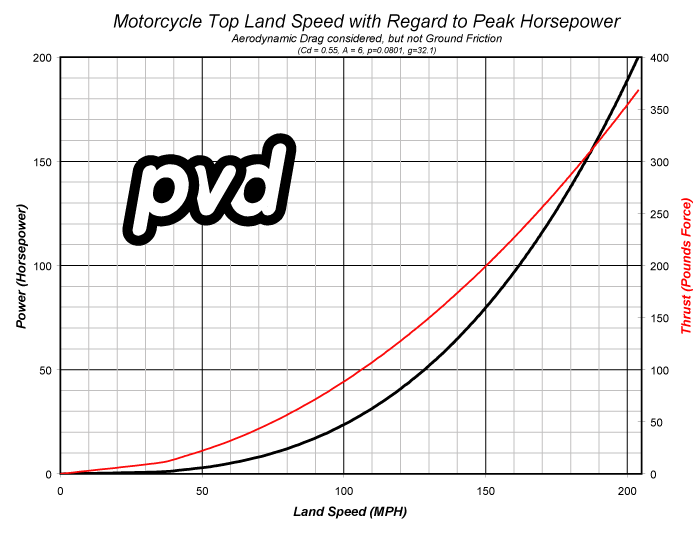
I will soon be adding a SAE Cost Down test to the gearing graphs above. With that I will be able to add an approximation of frictional losses. When I was doing most of my research regarding aerodynamic forces and ground friction, I had the chance to bump into a guy (fate!) that worked for Formula One teams around the world doing aerodynamic modeling and wind tunnel/track testing. He is probably super famous, but I never remembered his name, I just know that he knew WAY more than I did. We talked for a while about how Formula One and indy car teams develope their models. note here that REAL RACE TEAMS do a lot of math!! Anyway, he also said that most teams develop their mathmatical models of ground friction through empirical testing by doing a coast down test. An SAE J1263 Coast Down Prodedure to be exact.
I searched for a while to get the exact specs on the procedure, but eventually got distracted by other projects.
The basic gist, though, is this: you bring the vehicle up to some great speed. pull the clutch. the logger charts the deceleration curve until you come to a stop. since you know the mass of the system and the insantanous deceleration at any given speed, you use F=M*A to generate a force curve. since this is aerodynamic forces and ground forces mixed you can then parce out the aerodynamic forces, since you can mathamatically model that, checked by wind tunnel testing. subtract the aerodyamic forces and you have ground forces.
So that is how a REAL pro does it. So how do we? Find a long level section of road, get going real fast, pull the clutch, log the run on GPS, then start crunching numbers.
Most gps units are pretty lame for this, but the next generation of consumer gps loggers are just coming out. I have an Garmin Edge 305 on order. It has a new chipset in it that gets signal very quickly, about 5 times faster than current units. I think that this will be the first thing that i do with it.
A copy of the SAE coast down procedure is HERE.
Now it is time to look at the specific choice of final drive gears: HERE
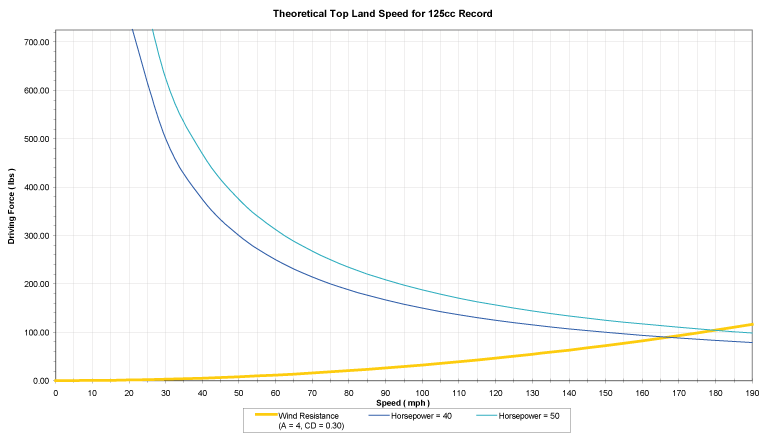
This site has not been
updated since Fall 2006.
Since then, all new projects
have been place on my wiki
site.
If you like what you see on
this site, Make sure to go
to the wiki for even better
projects.